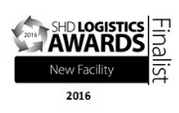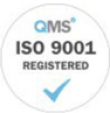Photo Credit: http://www.touchstar.co.uk/blog/why-your-warehouse-is-important
Warehouse Management Systems are software systems designed to optimise and support warehouse and distribution centre management. They control and administer operations such as inventory management, picking process and auditing. Warehouse management systems are usually the central unit in the software structure of a warehouse.
Are you looking to make your supply chain processes more effective but don’t know how?
In this article, we will be focusing on how logistics companies can improve their systems and processes, specifically in inventory management, picking processes and auditing. We will look into what a warehouse management system (WMS) in and how supply chain companies can utilise warehouse management system to aid your company in the short and long run.
So, how can a warehouse management system benefit your supply chain?
There are a large amount of moving parts in warehouse management systems, so we’ve outlined the 4 key aspects of a WMS followed by 8 ways that warehouse management systems provide value to businesses.
The 4 Key Features Of A Warehouse Management System
-
Management of Inventory.
A WMS should provide good inventory management features. This improves warehouse efficiency, organisation and accurate planning for new orders. This approach tends to supersede the traditional approach of permanently assigning locations, as this often leads to underutilised space.
-
Fulfilment Optimisation
Customer orders should be analysed to determine where products are located, the best available pick route.The system should also determine the best picking location and the proper pick method. The system should be capable of maintaining FIFO (first in, first out) integrity.
-
Receiving intelligence.
Your WMS should determine available locations for the products you receive and automatically assign the best location. This stops warehouse personnel needing to search for available locations, improves efficiency and takes care of special storage considerations. A WMS should also identify cross-docking opportunities.
-
Random slotting.
Random slotting means no items are assigned to a bin permanently. This allows for a more efficient use of space and better flexibility for changes in items and demand.
8 Ways Warehouse Management Systems Provide Value to Businesses
- Controlling the movement and storage of products.
- Flexibility in handling different order sizes and products.
- Improved accuracy and efficiency of customer order fulfilment.
- Advanced shipping notices, scheduling transportation and planning of receipt.
- Tracking, scheduling and control of warehouse labour.
- Better production control.
- Integration with Warehouse Control Systems (WCS) allowing for automation.
- Now that we’ve covered the key features of a WMS alongside how such a system provides efficiency, we’ll look at the various types of reporting.
6 Types of Reporting Systems
-
Bulk Picking Report
This report groups together items that are shipping in the same direction generally. This can be used to reduce shipping costs and lead times. It also reduces the time employees spend picking. It does this by locating fast moving products efficiently, so employees don’t pick the same product over and over..
-
Empty Bin Report
The empty bin report allows warehouse operators to find available space for incoming shipments. This report is useful in decreasing put-away time, eliminating the need to search the warehouse for an empty bin. The report is especially beneficial to 3PLs as it allows operators with multiple tenants to identify and utilize space efficiently.
-
Inventory on Hand
This report gives you information on how much inventory is able to ship at any given time. This report can be used to accurately adjust inventory. By setting maximum and minimum stock you can reduce the amount of slow moving inventory in stock and reduce backorders.
-
Direct/Indirect Labour Report
This report helps you to perform efficient planning of labour planning your labour force efficiently. It can be used to make adjustments to your labour force across various different timeframes. You can use this report to predict the amount of employees you will need at any given point in time and plan your workforce accordingly.
-
Vendor/Supplier Report
This report gives you statistics regarding the relationship between your supplier’s warehouse and your own. You can get reporting on things such as complaint history, supplier performance, and product information. These reports help you evaluate your company’s relationships with your suppliers, and highlight potential issues.
-
Shipments By Customer
This report can be used to personalise relationships with customers. Small changes you make to improve the experience your customers have can have significant impact on your business. Customizing the experience your customers receive from you encourages repeat business and facilitates word of mouth.
7 WMS Systems that you can use to further develop and optimise your warehouse processes:
-
4SIGHT WMS
4SIGHT WMS provides warehouse solutions that combine with sensor technologies. It provides inventory management features and real-time monitoring. Users can receive automatic notifications based on user defined events, such as items being in the wrong place. It integrates seamlessly with yard and dock management software, and provides automatic tracking reducing the potential for human error.
-
AccellosOne WMS
Accellos provides WMS systems for logistics service providers. It integrates with more than a dozen ERPs and allows businesses to achieve over 99% accuracy. Accellos can be used to increase the speed of warehouse operations and reduce picking times.
-
TECSYS
TECSYS is a leader in warehouse management software built on an industry-first, patented supply chain technology platform. It is designed to integrate with various enterprise applications such as ERP and CRM systems. It allows for flexible workflows designed to be modified by non-technical users.
-
Brightpearl
Brightpearl is a cloud-based back office solution for retailers and wholesalers. It provides warehouse management, inventory, sales, POS, accounting and CRM. Brightpearl helps achieve streamlined and efficient warehouse management workflows and a reduction in admin errors.
-
Peoplevox
Peoplevox is a warehouse & inventory management system designed for e-commerce businesses. It is designed to cope with a variety of needs across a diverse range of products and business models. The software has a mobile first design and can help you run a paperless warehouse.
-
AFS WMS
AFS provide a warehouse management system that is designed to work across a wide range of industry sectors. It is designed to provide companies with a foundation of best practices for warehouse processes. Additionally its analytics capabilities are designed to help you increase productivity and find new opportunity by giving you a deeper insight into your operations.
-
Robocom
Robocom provide a warehouse management system designed to be flexible and cost-effective. It provides a solution for inventory management and enables paperless systems. It helps streamline the management of warehouse operations and improves order accuracy.
The majority of these systems rely on seamless integration to provide value. If you’re struggling to choose a platform, then we recommend you outline the internal processes you’re trying to improve.
From there, you can get a better understanding of your organisations requirements all the while being able to clearly see what service will bring your supply chain operations the highest return on investment.
Thanks for reading from our Warehouse Consultants at Go Supply Chain!
















